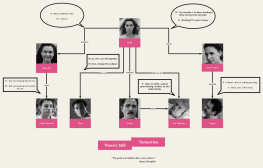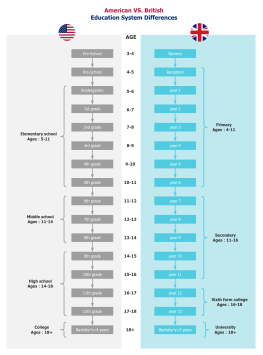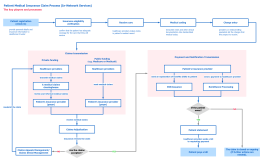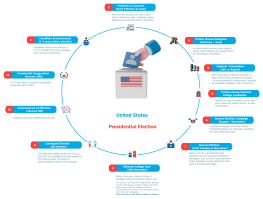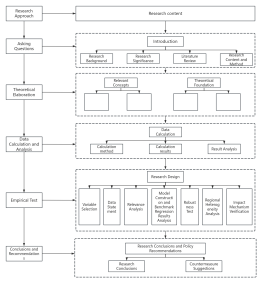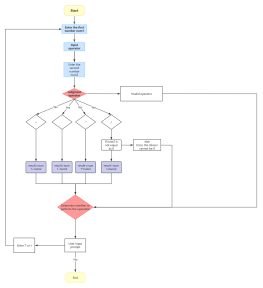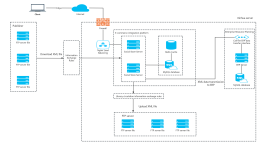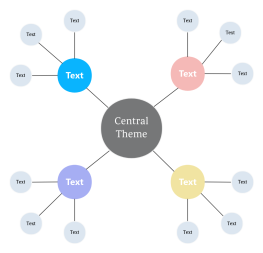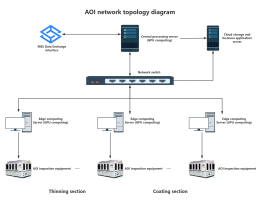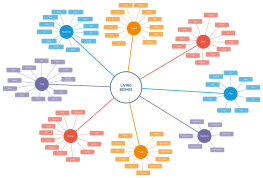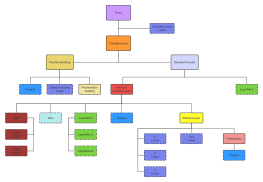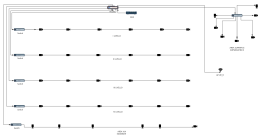Computer Network Learning-Exchange Technology
2024-11-12 11:03:04 82 0 Report 0
0
Login to view full content
Other creations by the author
Outline/Content
Circuit switching
Features
- N telephones are connected in pairs, requiring N(N – 1)/2 pairs of wires
- Circuit switching must be connection-oriented
- Three stages of circuit switching: establish a connection, communication, release a connection
Characteristics: The efficiency of circuit switching for computer data transmission is low.
- Computer data is bursty
- The time to establish a connection is long, which leads to a low utilization rate of communication lines, often less than 10%, or even 1%
- After establishing a connection, the transmission delay is small, and the real-time performance is good
- No error correction capability
- No caching capability
- The switch equipment is relatively simple
Store and forward
Do not establish an exclusive physical connection. Store the data to be transmitted in the node machine first, and dynamically establish a data transmission channel when the channel is idle, and then send it out in order of priority. The switching node is a communication control processing machine with complex data processing capabilities (such as data storage, error detection, data type conversion, data transmission rate conversion, etc.), which improves the communication efficiency and flexibility of the system; as long as the storage time is long enough, it can evenly distribute the idle and busy states of the channel, thereby compressing the capacity of the channel and the transfer equipment. This switching method is suitable for data communication.
Advantages
- Multiple groups can share communication channels, resulting in high line utilization
- The communication control processor has routing selection capabilities, which can dynamically select the best path for message packets through the communication subnet
- It can smooth communication traffic, improving system efficiency
- It can reduce transmission errors, improving system reliability
- The communication control processor can convert lines of different communication speeds and transform different data code formats
- Suitable for bursty transmission, high efficiency
Disadvantages
Added redundant information (source IP, destination IP, serial number)
Added redundant information (source IP, destination IP, serial number)
Packet Switching
Regardless of the length of the data being transmitted, treat it as a logical unit, add the destination address, source address, and control information, and send it in a package in the specified format. This package of data is called a message, and this store-and-forward switching method is called message switching.
Disadvantages
- The size of the message varies, making storage management complex
- Large messages cause long delays in storage and forwarding, resulting in long waiting times for small messages
- The entire message is retransmitted after an error
- Message switching is difficult to support the requirements of real-time communication and interactive communication
Packet Switching
Restrict the maximum length of data transferred at one time. If the data to be transferred exceeds the specified maximum length, the sending node will divide it into multiple packets, add headers (address, sequence number), and send them in groups.
No end-to-end path needs to be established before data transmission, which is "connectionless".
It has powerful error correction, flow control, and routing selection functions.
No end-to-end path needs to be established before data transmission, which is "connectionless".
It has powerful error correction, flow control, and routing selection functions.
Packet Switching/Packet exchanging/Packet switching/Datagram
Advantages
- Lower storage requirements for forwarding nodes, can use memory to buffer packets - fast
- Small forwarding delay - suitable for interactive communication
- If a packet is incorrect, only the incorrect packet needs to be resent - high efficiency
- Each packet can be transmitted via different paths - good fault tolerance
Disadvantages
- Latency issue: Packets need to be queued for storage and forwarding at each router, which can cause latency
- Error issue: Since different packets of the same message can take different transmission paths through the communication subnet, different packets of the same message may arrive at the destination node in the wrong order, duplicated, or lost
- Each packet must carry the destination address and source address during transmission; the control information carried by each packet also causes some overhead
- Not suitable for long message communication: Since packet switching does not ensure the various resources required for communication by establishing a connection, it cannot ensure the required bandwidth from end to end during communication. There is a certain delay, suitable for burst communication, not suitable for long messages, session-based communication
The key to packet switching implementation: the choice of packet length
The smaller the packet, the larger the proportion of redundancy (control information in the packet, etc.) in the entire packet, which will eventually affect the efficiency of user data transmission
The larger the packet, the greater the probability of data transmission errors, increasing the number of retransmissions, which also affects the efficiency of user data transmission
The length of the packet depends on the quality of the line that supports the transmission, and the better the line quality and the higher the transmission rate, the slightly longer the length of the packet can be
The packet length is the same in the same network, but not necessarily in different networks
The smaller the packet, the larger the proportion of redundancy (control information in the packet, etc.) in the entire packet, which will eventually affect the efficiency of user data transmission
The larger the packet, the greater the probability of data transmission errors, increasing the number of retransmissions, which also affects the efficiency of user data transmission
The length of the packet depends on the quality of the line that supports the transmission, and the better the line quality and the higher the transmission rate, the slightly longer the length of the packet can be
The packet length is the same in the same network, but not necessarily in different networks
Virtual Circuit
Features
- The process of establishing and releasing virtual circuits, before each packet is sent, a logical connection must be established between the sender and the receiver. This is because there is no need to actually establish a physical link, the physical link connecting the sender and the receiver already exists
- All packets of a communication are transmitted in sequence through this virtual circuit, so the packet packets do not need to carry auxiliary information such as destination addresses and source addresses
- Only a small amount of address information (LC number) is contained in the data block, and when the packet reaches the destination node, there will be no loss, duplication, or disorder
- When each packet passes through each node of the virtual circuit, the node only performs error detection, not path selection
- Each node in the communication subnet can establish multiple virtual circuit connections with any other node
- If a node or line in the virtual circuit fails, it will cause the virtual circuit transmission to fail
- The virtual circuit mode is more suitable for large-scale data transmission between sites
Virtual Circuit and Line Switching Comparison
A virtual circuit is a logical connection established during the transmission of packets, called a "virtual circuit" because this circuit is not dedicated
There may be countless virtual circuits between each node and other nodes
A node can have virtual circuits with multiple nodes at the same time
Each virtual circuit supports data transmission between specific two nodes
Due to the virtual circuit mode having the advantages of both packet switching and line switching, it has been widely used in computer networks
Both have three working stages and must be transmitted along the same path
A virtual circuit is a logical connection established during the transmission of packets, called a "virtual circuit" because this circuit is not dedicated
There may be countless virtual circuits between each node and other nodes
A node can have virtual circuits with multiple nodes at the same time
Each virtual circuit supports data transmission between specific two nodes
Due to the virtual circuit mode having the advantages of both packet switching and line switching, it has been widely used in computer networks
Both have three working stages and must be transmitted along the same path
0 Comments
Next page
Recommended for you
More

